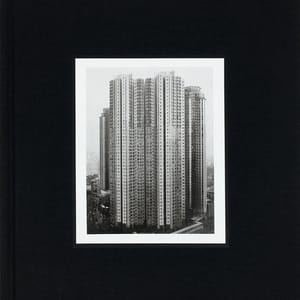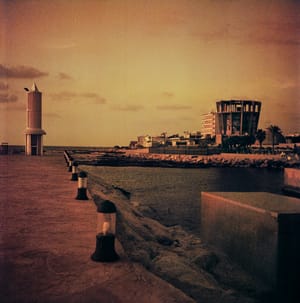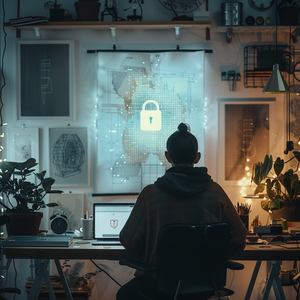High contrast photography is a captivating style that utilizes stark differences between light and dark to create visually striking images. This technique, particularly effective in black and white photography, emphasizes shapes, textures, and details, transforming ordinary scenes into dramatic works of art. This comprehensive guide explores the elements of high contrast photography, offering tips on how to balance light and shadow to achieve powerful compositions.

High contrast photography is a powerful method for creating images with strong visual impact. By leveraging the stark differences between light and dark, photographers can highlight shapes, textures, and details in a way that transforms ordinary scenes into dramatic works of art. This technique is particularly effective in black and white photography, where the absence of color emphasizes the interplay between light and shadow. In this article, we will explore the elements of high contrast photography, providing tips and techniques to help you master this compelling style.
Understanding Light and Shadow

Natural Light
Harsh Sunlight
Using harsh sunlight can create strong shadows and highlights, perfect for high contrast photography. Midday sun, with its direct and intense light, can produce deep shadows and bright highlights, emphasizing textures and details.
Tip: Position your subject so that the sunlight falls at an angle, creating long shadows and enhancing the contrast between light and dark areas.
Golden Hour and Blue Hour
The golden hour (the first hour after sunrise and the last hour before sunset) and the blue hour (just before sunrise and after sunset) offer unique lighting conditions that can enhance high contrast images. The soft, directional light during the golden hour creates warm highlights and deep shadows, while the blue hour provides cooler tones and subtle contrasts.
Tip: Use the golden hour for warmer, more dramatic images and the blue hour for a cooler, more mysterious effect.
Artificial Light
Studio Lighting Setups
Studio lighting allows for precise control over the light and shadow in your images. By using various light sources and modifiers, such as softboxes, reflectors, and grids, you can create high contrast effects that highlight your subject’s features.
Tip: Experiment with different lighting setups, such as Rembrandt lighting or split lighting, to create dramatic contrasts and emphasize specific areas of your subject.
Flash and Continuous Light Sources
Using flash or continuous light sources can help you achieve high contrast effects in various environments. These tools allow you to introduce light selectively, creating strong contrasts and adding depth to your images.
Tip: Use a single light source to create strong directional light and deep shadows, or multiple light sources to control the intensity and placement of highlights and shadows.
Techniques for Achieving High Contrast

Camera Settings
Low ISO for Clear Images
Using a low ISO setting helps reduce noise and maintain the clarity of your images, which is essential for high contrast photography. Noise can obscure details and reduce the impact of your contrasts.
Tip: Keep your ISO as low as possible, and compensate for low light by adjusting your aperture and shutter speed.
Aperture Control for Depth of Field
Controlling your aperture allows you to manipulate the depth of field, emphasizing your subject and enhancing the contrast between light and dark areas. A wide aperture (small f-number) creates a shallow depth of field, isolating your subject against a blurred background, while a narrow aperture (large f-number) keeps more of the scene in focus.
Tip: Use a wide aperture to focus attention on specific details and create a dramatic effect with a blurred background.
Shutter Speed Adjustments for Dynamic Range
Adjusting your shutter speed helps control the exposure and dynamic range of your images. A fast shutter speed can freeze motion and capture crisp details, while a slow shutter speed can create motion blur, adding a sense of movement and drama.
Tip: Experiment with different shutter speeds to find the right balance between capturing detail and creating dynamic effects.
Composition
Focusing on Stark Contrasts and Silhouettes
High contrast photography often emphasizes silhouettes and stark contrasts. Silhouettes are created when your subject is backlit, casting them into shadow and highlighting their outline against a brighter background.
Tip: Position your subject against a strong light source, and adjust your exposure to emphasize the silhouette and background contrast.
Framing Subjects Against Contrasting Backgrounds
Framing your subjects against contrasting backgrounds enhances the high contrast effect, drawing attention to the differences between light and dark areas.
Tip: Look for backgrounds that provide a stark contrast to your subject, such as a bright sky behind a dark building or a light wall behind a shadowed figure.
Post-Processing Tips

Editing Software
Adjusting Contrast and Exposure in Lightroom and Photoshop
Post-processing is crucial for enhancing the high contrast effect in your images. Adjusting the contrast and exposure settings in Lightroom or Photoshop can help you emphasize the differences between light and dark areas.
Tip: Increase the contrast and adjust the exposure to bring out the details in the highlights and shadows, creating a more dramatic effect.
Black and White Conversion for Dramatic Effects
Converting your images to black and white can enhance the high contrast effect, removing the distraction of color and focusing on the interplay between light and shadow.
Tip: Use the black and white conversion tools in your editing software to adjust the tones and contrasts, creating a powerful and dramatic image.

Fine-Tuning
Enhancing Details in Shadows and Highlights
Fine-tuning the details in the shadows and highlights of your images can help you achieve a more polished and professional look. Use the adjustment brushes and selective editing tools in your software to enhance specific areas without affecting the overall exposure.
Tip: Carefully adjust the shadows and highlights to bring out the details and create a balanced, high contrast effect.
Applying Selective Adjustments for Emphasis
Selective adjustments allow you to emphasize specific areas of your image, enhancing the high contrast effect and drawing attention to key elements.
Tip: Use the radial and gradient filters in your editing software to apply selective adjustments, highlighting your subject and enhancing the overall composition.

Practical Examples
Case Studies of High Contrast Photography
Analyzing case studies of successful high contrast photographs can provide valuable insights into the techniques and strategies used to achieve these effects. Look for examples in photography books, online galleries, and photography blogs.
Tip: Study the composition, lighting, and post-processing techniques used in these images, and apply these principles to your own work.
Before and After Editing Examples
Viewing before and after examples of edited high contrast images can help you understand the impact of post-processing. These examples can illustrate how adjustments to contrast, exposure, and color can transform an ordinary image into a dramatic, high contrast photograph.
Tip: Practice editing your own images, comparing the before and after results to see how different adjustments affect the overall impact.
High contrast photography is a powerful technique that can transform ordinary scenes into dramatic works of art. By understanding the interplay between light and shadow, and applying the right techniques and settings, photographers can create compelling images that capture the viewer's attention. Whether you're using natural light, studio lighting, or post-processing effects, the key to high contrast photography is to experiment and refine your approach. Platforms like Andromak offer valuable resources and tools to help photographers explore and showcase their high contrast work, providing inspiration and support along the way.

References
- "High Contrast Photography Tips and Techniques," Digital Photography School. [Source](https://digital-photography-school.com/high-contrast-photography-tips/)
- "Mastering High Contrast Photography," Photography Life. [Source](https://photographylife.com/mastering-high-contrast-photography)
- "Creating Dramatic Black and White Photos with High Contrast," Contrastly. [Source](https://contrastly.com/creating-dramatic-black-and-white-photos-with-high-contrast/)
- "High Contrast Photography Techniques," Expert Photography. [Source](https://expertphotography.com/high-contrast-photography/)





